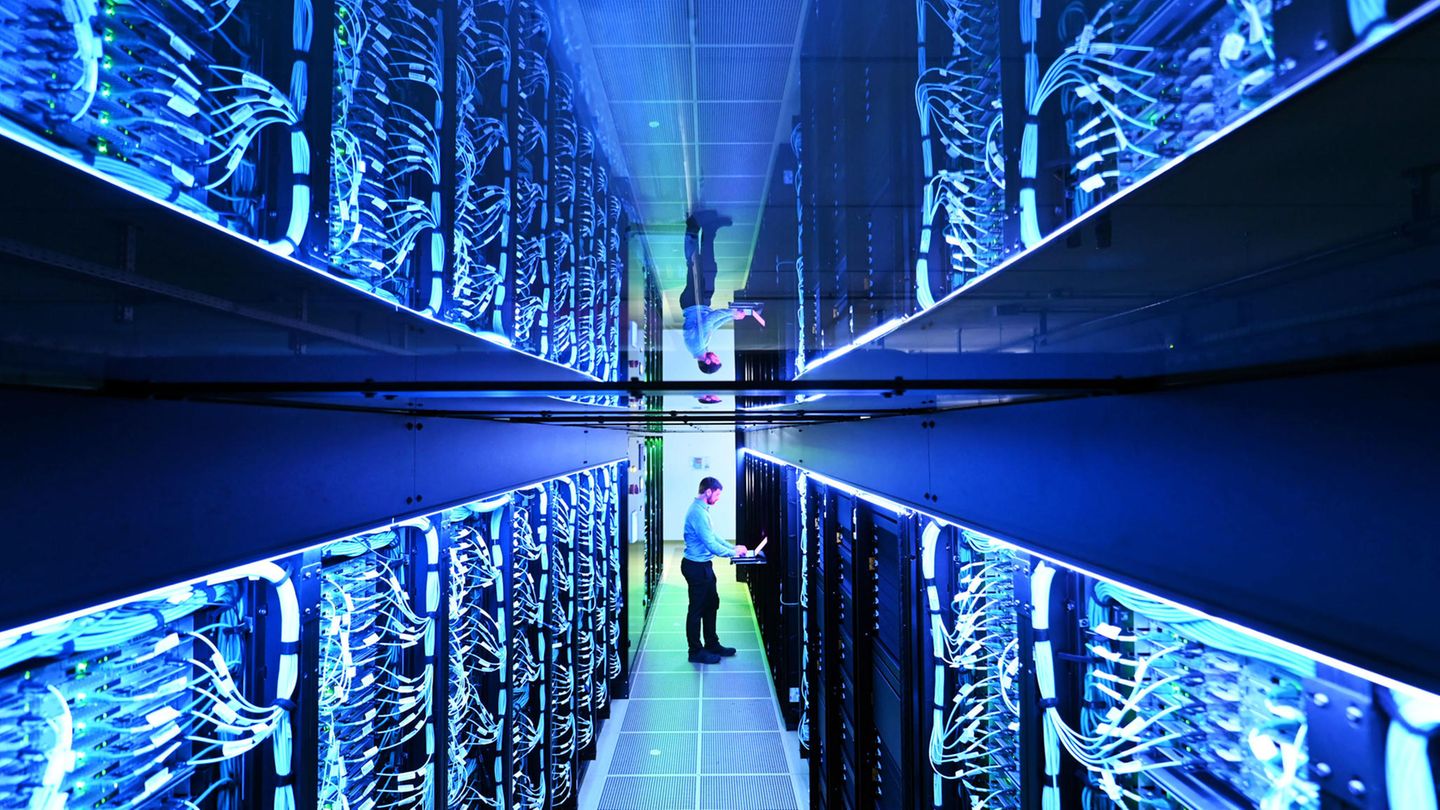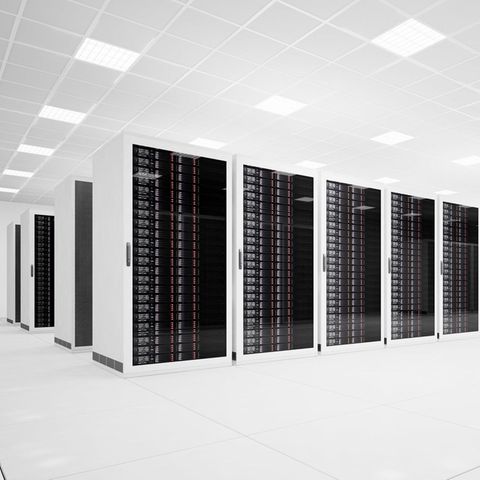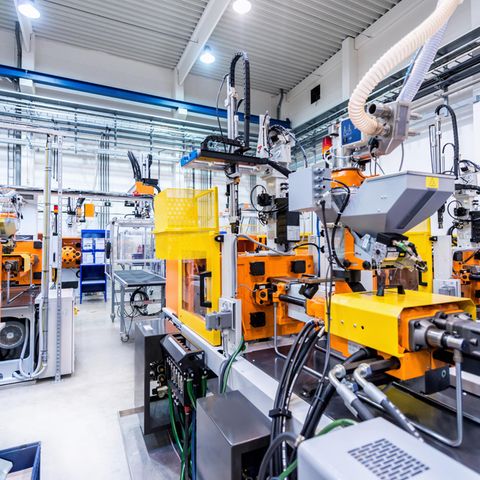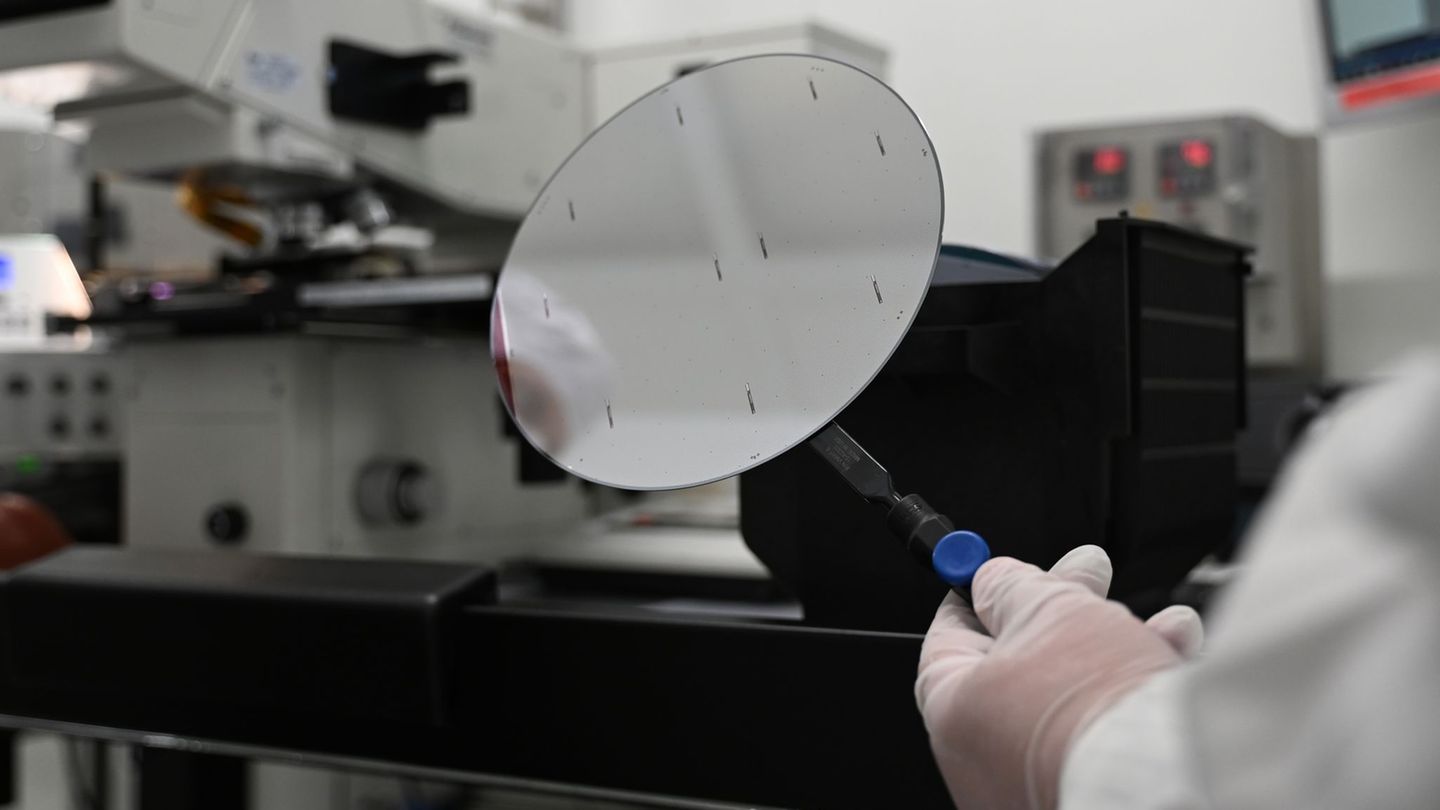Artificial intelligence
Their hunger for energy makes AI a climate killer
Copy the current link
Artificial intelligence craves data and electricity. The latter endangers the climate goals because the energy demand cannot be covered by renewables. And now?
The energy consumption of data centers for AI applications and other digitalization projects in Europe will increase sharply by 2030 – and probably cannot be covered by renewable sources alone. According to a study by McKinsey, electricity demand is expected to almost triple during this period to more than 150 terawatt hours by 2030. “That accounts for around five percent of total European electricity consumption,” said Diego Hernandez Diaz, partner at McKinsey & Company. So far it is only two percent.
The increasing demand for electricity from AI could accelerate climate change if it is not met by renewable energy, says the McKinsey study. Currently, a large part of the electricity for data centers still comes from fossil fuels, although many large data center operators – including industry giants such as Amazon (AWS), Microsoft and Google – have committed to running their systems with renewable energy.
The tech giants recently had to admit that the AI boom has led to a significant increase in their greenhouse gas emissions. The latest Google environmental report said last July that emissions had increased by 13 percent to over 14.3 million tons of carbon dioxide last year alone, “primarily triggered by increased energy consumption in data centers and emissions in the supply chain.”
Why is artificial intelligence a power guzzler?
The causes of the great hunger for electricity can be seen as an example in the technical equipment of a new AI data center that was opened by the Elon Musk company xAI in the summer. The system uses 100,000 of the latest special chips (so-called H100 GPUs from Nvidia) at the same time, as Musk proudly announced on X.
“Each of these Nvidia processors has an output of 700 watts, which roughly corresponds to the output of a modern, energy-efficient oven,” says Ralf Herbrich, head of the “Artificial Intelligence and Sustainability” department at the Hasso Plattner Institute (HPI) in Potsdam. If this data center trains a model, it would need 70 megawatts just for the calculations. “If you add the energy consumption for network transmission of data, that doubles again. That’s equivalent to the energy output of 25 wind turbines.”
This adds up worldwide: Herbrich estimates that global data centers account for four to five percent of energy consumption. “If you add the use of digital technologies such as laptops and smartphones, this amounts to eight percent of global energy consumption.” An enormous proportion of this energy goes into training AI models.
Having texts and images created using modern AI models uses a lot of electricity, similar to AI training: according to the expert’s calculations, generating an image based on a text query uses as much energy as half a cell phone charge. “Even if AI models are trained less in the future, prediction with these models will cause energy consumption to steadily increase.” The number of calculation steps for the most accurate AI models has increased by a factor of almost a million between 2018 and today.
But Herbrich also sees approaches to reducing the energy consumption of AI methods: reducing the number of calculation steps and significantly reducing the energy per calculation step. To do this, you have to use other mathematical methods that are more efficient. An alternative approach is to reduce the energy consumption of the individual calculation steps. It is important that when the formulas are simplified, the accuracy of the AI predictions only decreases minimally.
Not enough clean electricity
But even with more energy-efficient algorithms, the demand for electricity from AI applications will increase because more and more people are using artificial intelligence at work and in their free time. And given the actual energy mix in the European Union, every use of AI will also generate CO2 emissions. In 2023, almost a third of electricity (32.5 percent) in the EU was produced using fossil fuels.
The increasing demand for clean electricity poses significant challenges, says McKinsey energy expert Diaz. Reliable power sources are only available to a limited extent. There are also bottlenecks in the availability of skilled workers. According to the study, the additional demand for green electricity requires massive investments in renewable energy sources and the expansion of electricity infrastructure to transport electricity from generation sites to consumers.
For the overall climate footprint of artificial intelligence, the contributions to climate protection and adaptation to climate change must also be taken into account – for example in the energy sector, in goods production, in agriculture and forestry or in disaster control. “AI can help to increase food security and use resources more efficiently in agriculture and industrial production, but also to accelerate scientific experiments and thus the development of clean technologies,” explained Vérane Meyer, digital expert at the Heinrich Böll Foundation, about the submission of the report “Smart technology against climate change”.
The digital industry also emphasizes the role of AI in helping with climate protection: “Artificial intelligence has huge potential for climate protection,” says Bitkom Managing Director Bernhard Rohleder. “AI can significantly reduce the energy consumption of factories, make buildings more CO2-efficient, reduce food waste or minimize the use of fertilizer in agriculture.”
DPA
Christoph Dernbach / cl
Source: Stern






